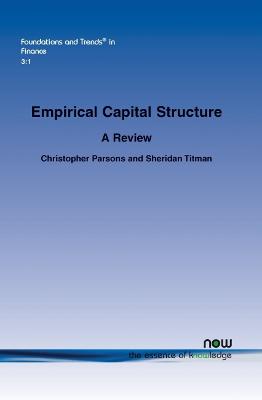Foundations and Trends (R) in Finance
1 total work
The firm's capital structure - how it funds operations by raising capital from a variety of sources - has attracted considerable attention from both academics and practitioners. The empirical capital structure literature explores both the cross-sectional determinants of capital structure as well as time-series changes. Empirical Capital Structure reviews both aspects of this literature.
The book is organized around a simple framework that contains three key ingredients: the costs and benefits that determine a firm's capital structure; the existence of shocks that cause firms to deviate, at least temporarily, from their targets; the presence of factors that may prevent firms from constantly maintaining debt ratios that match their targets.
Empirical Capital Structure is organized as follows:
The book is organized around a simple framework that contains three key ingredients: the costs and benefits that determine a firm's capital structure; the existence of shocks that cause firms to deviate, at least temporarily, from their targets; the presence of factors that may prevent firms from constantly maintaining debt ratios that match their targets.
Empirical Capital Structure is organized as follows:
- Section II discusses specification and econometric issues that will be important for many of the tests considered.
- Section III reviews cross-sectional capital structure determinants.
- Section IV explores factors that pull firms away from their leverage targets.
- Section V discusses reasons why firms might not immediately reverse the effect of these leverage shocks, apparently allowing deviations from their targets to persist for extended periods of time.
- Section VI explores a group of studies that look at how leverage feeds back into a firm's real business decisions.
- Section VII concludes and provides suggestions for new research.
